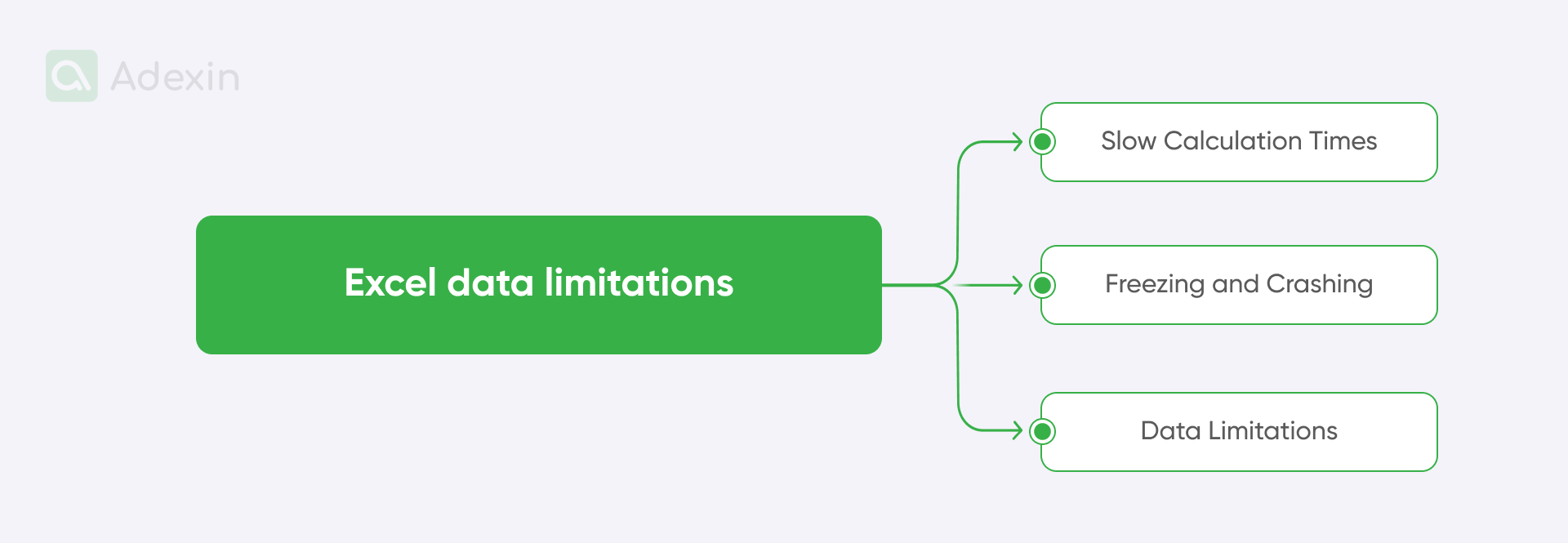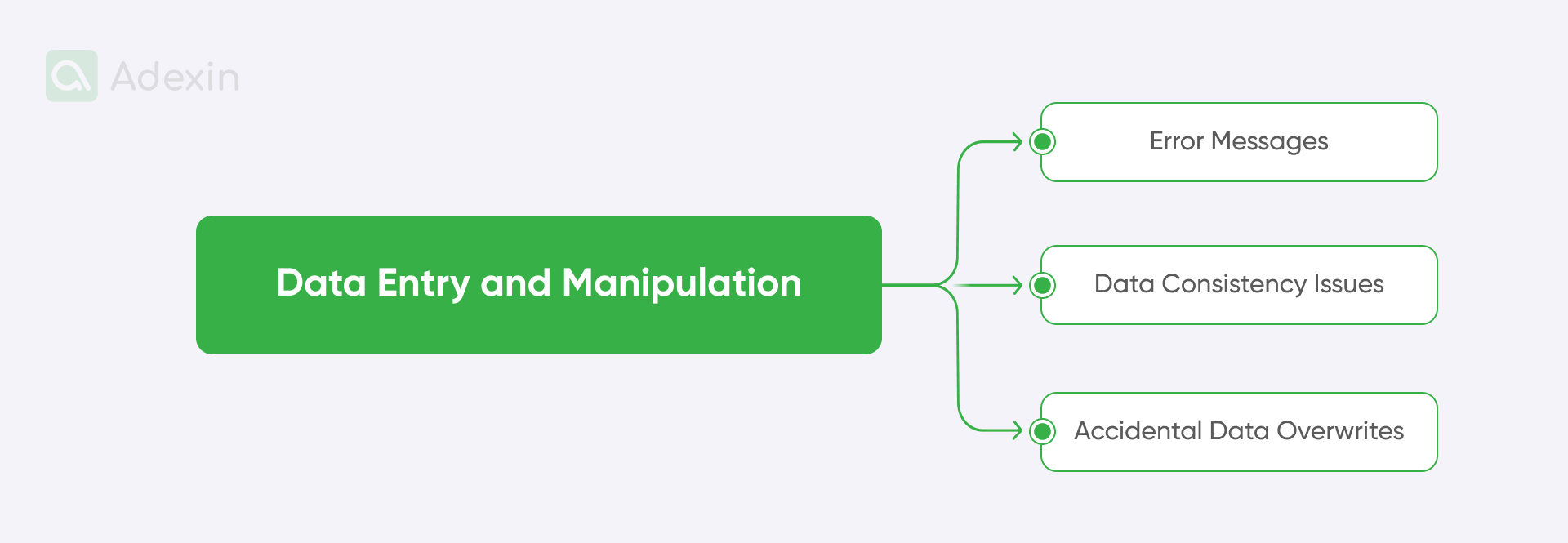Using Excel in logistics and supply chain poses many challenges, such as data consolidation, big data analytics, and integrations. Working with MS Excel is becoming increasingly complex as we observe significant industrial development and automation in logistics, accompanied by the emerging application of AI in Excel. The latest McKinsey report confirmed that too many companies still rely on manual forecasting and that applying AI can reduce errors by between 20 and 50 percent. Consequently, AI will serve as both an enabler and a productivity booster for the workforce, yet its deployment may also introduce direct challenges when using Excel.
AI enables supply chain and logistics companies to become more competitive with each other by using Excel, creating a significant challenge for others in the industry. However, one of today's greatest challenges is executing transformation journeys using Excel as an effective tool. We want to say that, among many logistics and supply chain companies, effective execution remains a primary hurdle.
In this article, we'll outline the top Excel challenges and guide you to find more effective ways to use MS Excel as an efficient tool. Find out here about Microsoft Excel problems and solutions. We use our direct experience in logistics and supply chain to show you more tips and tricks on making Excel your logistics solver. Let's buckle up!
What are the Microsoft Excel problems?
If you're looking for challenges with Excel in logistics and supply chain, I want to highlight the ongoing lack of knowledge about using it daily. Regular personnel in operations, administration, or warehouse clerks often don't know how to use functions in Excel or consolidate data in Excel, etc.
I have seen in logistics that most companies use ready-made Excel workbooks created several years ago to run calculations, analytics, and daily reports. They don't improve these tools; they're just using existing solutions that often aren't flexible or automated enough to reduce manual work.
This subject poses a huge challenge, and many logistics and supply chain companies prefer to switch to automated custom software that allows them to automate workflows, collect data, and create reports in a single solution. It has immense potential to boost your KPIs, making you a true "Supply Chain KPI Killer." We've written an entire series on how to avoid logistics and supply chain KPIs for LinkedIn Pulse.

Let us tell you the major Excel challenges:
Performance issues that Excel exercises
Logistics and supply chain clerks using Excel mostly struggle with a lack of automation. It should be done on the run, as you may want to adjust your reporting occasionally. Otherwise, you face these performance issues:
Slow calculation times. This performance issue arises when using complex formulas or large datasets, which can significantly slow down Excel's performance when not optimized. A single workbook might often handle massive calculations on a dataset with hundreds of rows and columns. When each cell contains several-digit values, it becomes even more complex. If we want to display the data on a chart that updates automatically, the process slows down even further.
Freezing and crashing. Excel may become unresponsive or crash when handling huge datasets. It is especially common when working with large files or performing intensive calculations. For example, if we had over ten spreadsheets in one workbook, each tab containing several thousand rows and hundreds of columns, and wanted to pivot data using formulas or macros, Excel would occasionally crash.
Data limitations. Big data limitations are closely tied to the abovementioned. Excel struggles to process huge volumes of data from multiple sources, partly because its formulas and macros aren't as isolated or robust as coding in dedicated software. Unlike custom software, where code is stable, and changes are controlled, in Excel, code changes can occur, often accidentally, making it vulnerable to errors.

Data entry and manipulation
Every time you want to introduce a change in an Excel workbook, it's often not easy to amend changes smoothly. Suppose you want to create a custom calculation. In that case, it won't be possible without adding formulas and coding, which requires a certain level of knowledge — or even consulting tools like ChatGPT correctly. However, this doesn't replace knowing how Excel works. Here are outlined a few errors you really can struggle with:
Error messages. Incorrect formulas or data entry can lead to various error messages. These errors include #DIV/0!, #VALUE!, or #REF!
Data consistency issues. Maintaining data consistency across multiple worksheets or workbooks can be challenging. This is especially true when dealing with large datasets.
Accidental data overwrites. Data entry or formula editing mistakes can lead to accidental data overwrites. Even strict manual errors can potentially cause significant data loss.

Formula complexity
As I already said, Excel's power lies in its ability to perform complex calculations with relative ease. However, as formulas become more troublesome, we can also introduce related challenges:
Complex formulas. Creating and understanding complex formulas can be difficult. It is important, especially for direct logistics and supply chain users unfamiliar with Excel's functions and syntax. So, if you want to create even a simple data set and tool for, let's say, time and logistics performance tracking, personnel can still struggle with it.
Formula errors. Even small errors in formulas can lead to incorrect results. When working with reporting or KPI Excel workbooks, your control tower personnel may find it difficult to identify and correct these issues. It is one of the main reasons many logistics and supply chain companies are transitioning from Excel to supply chain control tower software.

File size and compatibility
Excel file size and compatibility can significantly impact its performance and usability. Large files can slow down calculations, and as someone working in the supply chain, I've experienced this every time a file was opened or saved. Data was often pulled from MS SharePoint, further slowing file opening times. Additionally, compatibility issues can arise when sharing files between different versions of Excel (especially when using SharePoint):
Large file sizes. Large Excel files can often be slow to open and save. In summary, this happened especially when working with older versions of Excel. This creates a serious Excel limitation in the whole system.
Compatibility issues. Files created in newer versions of Excel were not fully compatible with older versions. This led to formatting and functionality issues and, again, crashes.
Other challenges with Excel workbook and Excel functions
We cannot outline all the Excel challenges that pose dangers to logistics and supply chain operations, but we can share more about several issues that have actually occurred during my work in logistics and supply chain. Here are a few more categorized subjects that delve into various problems with Excel:
Steep learning curve. Excel has a wide range of features and functions, making it a powerful tool but also a complex one to learn. As a result, personnel often don't know how to use it to fully leverage its strengths.
Limited data visualization capabilities. While Excel offers basic charting capabilities, it may not be as powerful as dedicated data visualization tools like Power BI. Of course, you can improve your appearance using VBA, but it will remain a specialized, difficult tool for less computer-savvy people.
Security concerns. Sharing sensitive data in Excel files can pose security risks if not properly protected. Even if you're using it within operations, people who are not authorized may still make changes to the files, leading to errors and data discrepancies.
Despite many challenges, Excel is also an enabler of seamless cooperation. This is actually something you should know when starting to work in Excel and guiding your personnel on how to use it properly. Excel can be the ultimate solution to most of the aforementioned problems, but integrating it across various departments requires a deeper understanding of its functionality.

Using Excel in supply chain operations: personal experience
Let's take a look at the reviews of a former UPS Supply Chain Solutions Control Tower employee in this block:
“By looking at my personal experience with Excel in the supply chain, I would like to refer to my personal experience. This will actually still refer to what we already said about people training and their ability to cope with changes as well as with MS Excel complexity.
My work in the Control Tower was strictly related to managing huge volumes of data by using MS Excel. During my work, I was also introducing to operational and administrative team members the new ways of using Excel. In this case, a lot was related to automating routine tasks with VBA and Macro, which makes even the typical generation of Packing List templates within Excel seamless every time.
So, by giving you a very grounded example of my work, I created a workbook in MS Excel with a template of a packing list. Normally employees needed to fill in the data manually and find a way to print the document where the packing list was part of a larger set of paperwork attached to the shipment.
I added a macro and VBA button that triggered printing directly after clicking it on the workbook. Thanks to this, operational employees could do their jobs in just one click without special training on how to export the document for printing. All the sequences were included in the macro embedded into the workbook.
The biggest challenge of introducing new solutions based on Excel to operational employees in the supply chain is fully understanding their needs and struggles. I had the opportunity to observe their problems on a daily basis, and therefore, I could understand why simple repetitive tasks caused so much frustration. It wasn't something they couldn't do, but those fractions of seconds and the same tasks repeated several times a day cost them time and affected their morale. Just a few extra clicks could lead to choosing the wrong action—for example, saving a file instead of printing it.
So, it is crucial to provide the supply chain with tools that shift their work and make it easier. In the supply chain, people often make the same errors, even though they are confident they can fix them. I can recall this being one of the most difficult challenges to overcome when introducing new solutions. However, I believe that if your MS Excel skills are strong, you'll be able to help and make your colleagues' work in operations easier.”
Paweł Bęś, Logistics Marketing Expert by Adexin
Need help with supply chain control tower software for your business?
Learn how we can help you
Explore moreHow do we overcome Microsoft Excel problems in logistics?
Excel is a highly dedicated tool for logistics and supply chain, and there's no doubt about its effectiveness. You can solve many of the problems mentioned earlier using solutions like Excel to Web apps. With this solution, you integrate Excel with a custom solution based on supporting software that can be accessed online.
In this way, you simply upload the data online, and the system can calculate all that for you based on your needs in just a few clicks. Of course, there are less robust solutions, like uploading an Excel file to Google Drive, which can display cells and a similar interface to Excel itself. The meaning behind this is also Excel to the Web app.
However, users can adopt various strategies and approaches when they think about Excel and how to mitigate the issues mentioned above. I would suggest several below:
Optimizing formulas and calculations. Using efficient formulas and techniques to reduce calculation time.
Regularly saving and backing up workbooks. Preventing data loss due to accidental closures or crashes.
Using data validation. Ensuring data accuracy and consistency by restricting input values.
Leveraging Excel's built-in features. Utilizing features like conditional formatting, pivot tables, and data analysis tools to streamline tasks.
Staying updated with the latest version. Accessing new features and performance improvements.
Considering alternative tools. Exploring specialized data analysis and visualization tools like Power BI for more complex tasks.

Switching from Excel to Web app software: case study experience
At Adexin, we have a case study on how we streamlined educational inventory purchasing processes for ITS Astra. In this case, we removed Excel from operations and applied a more efficient approach to handling other procurement-related tasks.
ITS Astra, a leading educational resource provider, faced challenges managing their inventory purchasing process. The root causes were paper catalogs, manual data entry, and slow approval cycles, which hindered efficiency and caused productivity to drop.
To address these issues, we implemented a custom software solution that revolutionized their operations:
Digital catalogs. Eliminated the need for physical catalogs. They were streamlining the search for educational resources.
Automated workflows. Simplified budget control, approval processes, and inquiry generation. It all was to save time and reduce errors.
Paperless operations. Reduced reliance on paper documents, automating document flow, directly improving efficiency.
Real-time insights. We provided a model for clear visibility into logistics, supply chain, and purchasing analytics.
By automating routine tasks and providing real-time data, we empowered ITS Astra to scale its operations. They saw how they could improve accuracy, and now they can deliver exceptional service to their customers.
Need Excel to Web app transformation?
Let’s find the best solution together
Explore moreFinale takeaway
We recently found in one of the McKinsey reports that over 60 percent of projects are running late or over budget. This indicates that I want to repeat what is in the intro despite the capacity for change—whether through using Excel or deploying custom software such as WMS or TMS systems or procurement systems. Effective execution remains a primary hurdle.
This means that if you want to switch from Excel to professional logistics and supply chain software, you must carefully choose your business partner. At Adexin, we can help you overcome the challenges of using Excel in operations by guiding you to more robust solutions based on custom software. Want to know more about our cases? Contact us today, and let's see how it works together.



